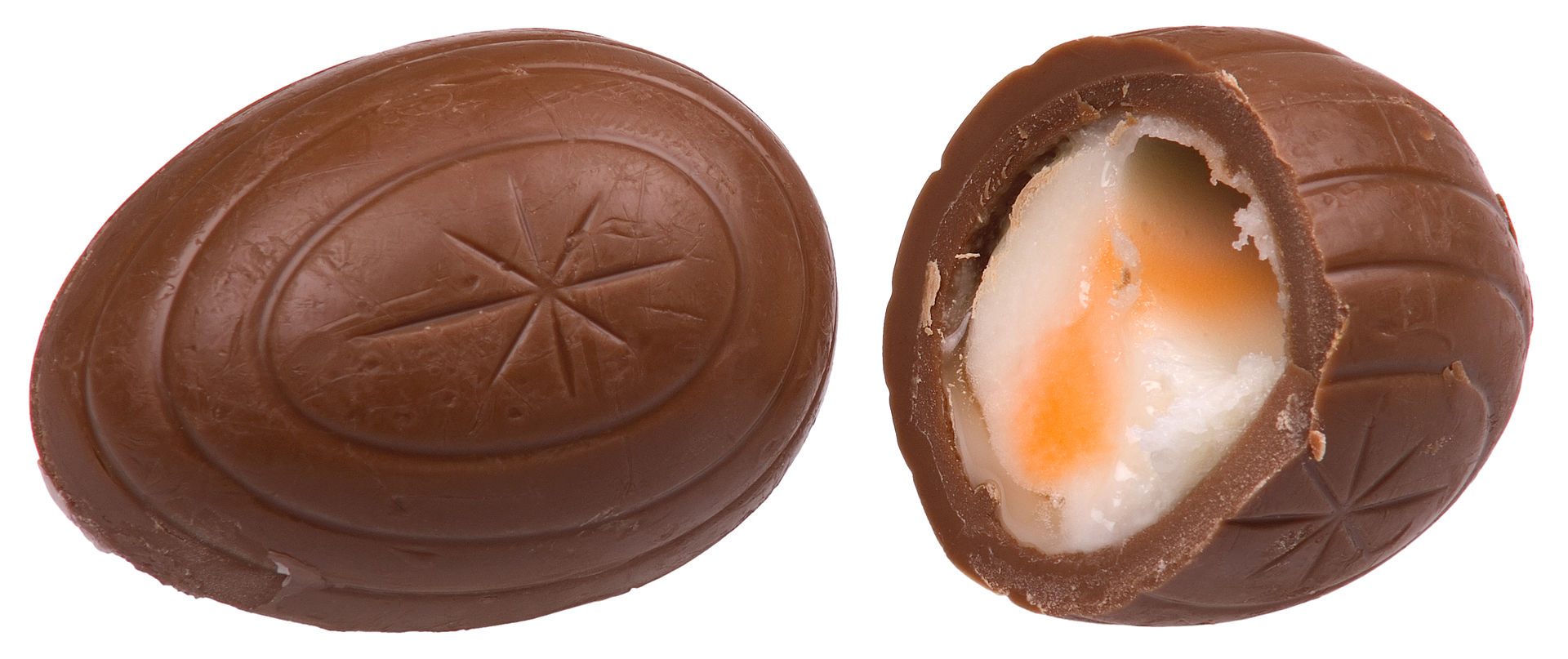Read this blog post in 簡體中文, 繁體中文, Deutsch, Français, 日本語, Português, Español, Tiếng Việt or Pусски.
What do brightly coloured eggs, baskets full of chocolate, and giant bunnies have to do with one another? If you guessed Easter, you’ve guessed correctly!
Celebrated by billions of people around the planet, Easter is a special celebration that occurs in the spring each year. Many families come together around this special holiday, and there are numerous events for children at this time of year. Easter is particularly popular in the English-speaking world and many traditions that started in Europe are now followed elsewhere.
Whether you’ve never heard of this holiday or you know a little bit and would like to better understand, today we’re answering the question, “What is Easter?”, along with other common questions you might have about this unique holiday. We’re even giving you a few tips for how you can celebrate Easter yourself if you’ve never had the chance to participate before.
Discover the Religious Significance
 At its core, Easter is a religious holiday. Much like Christmas celebrations mark the birth of Jesus Christ, Easter recognises his death and resurrection.
At its core, Easter is a religious holiday. Much like Christmas celebrations mark the birth of Jesus Christ, Easter recognises his death and resurrection.
In the Christian teaching, Jesus was crucified on a cross for the sins of the world. This is why the cross is a universal symbol for Christianity. According to the gospel message, after Jesus’ death, he was buried in a tomb. After three days, he came back to life; in English, this story is called the resurrection.
The Easter story plays a fundamental role in the Christian faith, which is part of the reason the holiday is so widely celebrated. Most Christians attend special Easter services on this day, which always occurs on a Sunday. The date itself changes, based on the March Equinox. In fact, while most people do celebrate Easter on the same day, some different denominations of Christianity celebrate Easter on different days.
In addition to Easter itself, Christians also celebrate many other holidays in the days leading up to Easter. These include festivals like Mardi Gras (Shrove Tuesday). Many Christians also mark Lent, a period of approximately 40 days leading up to Easter.
Although the message of these holidays is inherently Christian, many people from other faiths still partake in the Easter fun. To accommodate others, some secular Easter events are instead called “spring” celebrations.
Who is the Easter Bunny?
The Easter bunny is a legend that originally hails from Germany. In German folklore, the Easter bunny is a friendly rabbit who brings young children eggs before the holiday.
Many Christians do not eat certain foods during Lent; this practice is called fasting. In Germany, Christians use to avoid eggs during Lent, which explains how the Easter bunny tradition came to be. The bunny came with his eggs to mark the end of Lent.
While the Eastern bunny doesn’t enjoy the same level of fame as say, Santa Claus, many children still believe he shows up to bring eggs and presents each year. Bunnies are also associated with Easter in general, simply because the holiday takes place in the spring, a time when rabbits and their offspring abound.
Many Easter events feature an adult in a giant bunny costume who pretends to be the Easter bunny for the day. In some countries, such as the United States, it’s also common for families to take pictures with the Easter bunny. Many shopping centers and schools pay someone to dress as the bunny so that children can take their photos with him.
How Do Families Celebrate Easter?
Dyeing Easter Eggs
Because of the Easter bunny story, many of the Easter celebrations include eggs in one way or another. Dyeing eggs is a popular tradition for many children at
Easter. Parents can purchase commercial egg dyeing kits or make their own food safe dyes at home. Boiled eggs are dipped into the dye and then displayed as part of the Easter fun.
If the eggs are refrigerated properly and the correct dye is used, the colour only impacts the shell. After the fun of creating colourful designs, you can eat the hard boiled egg. In fact, because so many eggs are dyed around the holiday each year, many people desperately search for recipes in the days after Easter so they can use up all of their extra eggs.
Easter Egg Hunts and Rolls
Another egg-related tradition at Easter is the Easter egg hunt. In many parts of the world, parents will hide brightly coloured eggs outside for their children to find. Schools, churches, and community groups may also organise Easter egg hunts for many children to participate in together.
Armed with little baskets, children search for the eggs that the bunny leaves behind. These may be actual eggs, but in many cases, parents hide small plastic eggs that contain treats inside. Common treats include a piece of candy, a small toy, or a coin. Children race to see who finds the most eggs on their hunt.
Another popular event is the Easter egg roll. Armed with a long spoon or stick, children compete against one another in a race with their eggs. The goal is to push your eggs across the finish line first.
One very famous Easter egg roll takes places at the White House in the United States each year. The president generally appears with his wife at this special event and children from all across the country come to celebrate with his family.
Easter Baskets
Easter baskets are another popular gift some families exchange. An Easter basket may be filled with plenty of different gifts, pieces of candy, and other fun treats.
 Many popular candy companies produce Easter-themed treats every spring. These may include fruity jelly beans that look like small eggs, chocolates in the shape of a bunny, and marshmallows that look like baby animals. One extremely popular example is the Cadbury Cream Egg. This small chocolate egg is stuffed with a sticky cream fondant frosting, which looks like the inside of a chicken’s egg. This candy was originally made in England, but today children around the world enjoy it at Easter.
Many popular candy companies produce Easter-themed treats every spring. These may include fruity jelly beans that look like small eggs, chocolates in the shape of a bunny, and marshmallows that look like baby animals. One extremely popular example is the Cadbury Cream Egg. This small chocolate egg is stuffed with a sticky cream fondant frosting, which looks like the inside of a chicken’s egg. This candy was originally made in England, but today children around the world enjoy it at Easter.
What do People Eat at Easter?
Easter Brunch
Stuffing your face with chocolate, marshmallows and fruit treats is great fun…but candy isn’t a healthy meal, of course. Instead, most families celebrate Easter with a delicious feast.
Some choose to make an Easter brunch. Brunch is generally eaten anywhere from 10 AM – 2 PM and features items traditionally found at breakfast or lunch. That’s actually where this word “brunch” comes from. Breakfast + lunch = brunch!
An Easter brunch may feature a variety of different dishes, but it almost always includes…you guessed it, eggs! Families may eat the eggs they dyed in the days leading up to Easter, or eggs may be featured in any number of different preparations. Casseroles, quiches, and egg bakes are just a few of the many ways the egg might show up on the Easter table.
Of course, other brunch staples are also a popular addition to the Easter meal. These may include pies and tarts, as well as alcoholic drinks like the Bloody Mary or Mimosas, a tasty mix of champagne and orange juice.
Roast Meals
 Families who attend church on Easter morning may instead choose to have a roast lunch or supper after their services. A roast meal generally includes a cut of meat, along with plenty of vegetables and various side dishes. Both ham and lamb are popular options for an Easter roast.
Families who attend church on Easter morning may instead choose to have a roast lunch or supper after their services. A roast meal generally includes a cut of meat, along with plenty of vegetables and various side dishes. Both ham and lamb are popular options for an Easter roast.
Lamb is a traditional option because Jesus came from the Jewish culture and Jews do not eat pork. The last meal Jesus shared with his apostles is known as the “Last Supper” in English. While it’s unknown exactly what was eaten at this meal, it may have very well included a lamb roast.
A ham roast has also been associated with Easter over the past few centuries, as it is a meat that can be cured and left out without refrigeration. Before refrigerators were commonplace in most homes, it wasn’t uncommon to enjoy a ham in the spring before other meat was ready for slaughter. This tradition has continued on today and many families still eat a roast ham on Easter.
You Can Celebrate Easter at Home, Too!
Have you ever celebrated Easter before? Even if you’ve never had the chance to partake in Easter celebrations, it’s easy to recreate some of these traditions at your own home. Why not host some friends at your place and enjoy a delicious meal together or find some recipes online for dyeing eggs? Everybody loves to spend time with their loved ones and who doesn’t love a feast of delicious food?
Whether you’re Christian or not, it’s great fun to participate in the Easter holiday. And, if you’re lucky enough to be in the English-speaking world, you’ll probably get some time off, too. Most schools give their students a full week of time off around the Easter holiday, and Good Friday is a bank holiday in many countries.
Don’t miss this video exploring 20 additional Easter facts that might be new to you!







